Adventures in AI Cover Art
No doubt you seen AI-produced images popping up all over social media.
One such AI is DALL-E, credited with creating the world’s first AI magazine cover. The one I’ve heard the most about is Midjourney, and the beta is now open to all!
Over the past couple of days, I’ve had a ton of fun messing around with different prompts. You can tell it to create literally anything, with as much or little detail as you want.
If you want to see Denise Richards eating an alarm clock on Mars, just ask!
After a minute or two, you’ll be presented with four options. From there you can request variations on any of those options, or upscale them to a higher resolution.
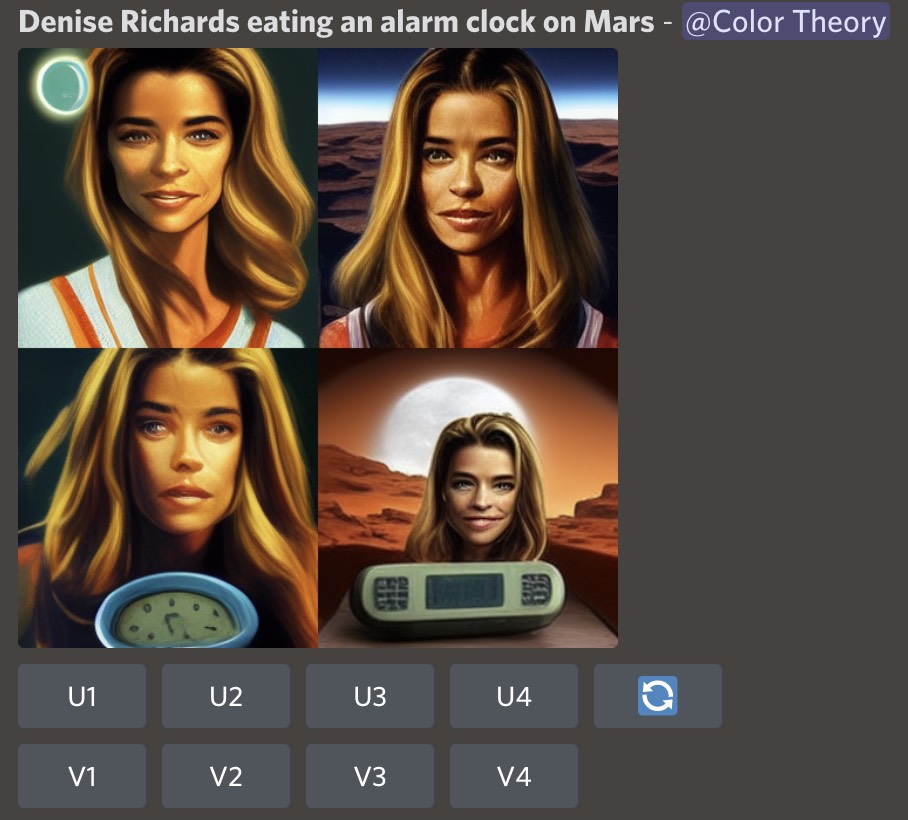
You don’t even have to download an app. It happens entirely on Discord.
I’m barely scratching the surface here! I’ve got a lot to learn about what sort of prompts perform best.
In the meantime, here are a few images that our robot overlords whipped up for me, along with the prompts that spawned them:
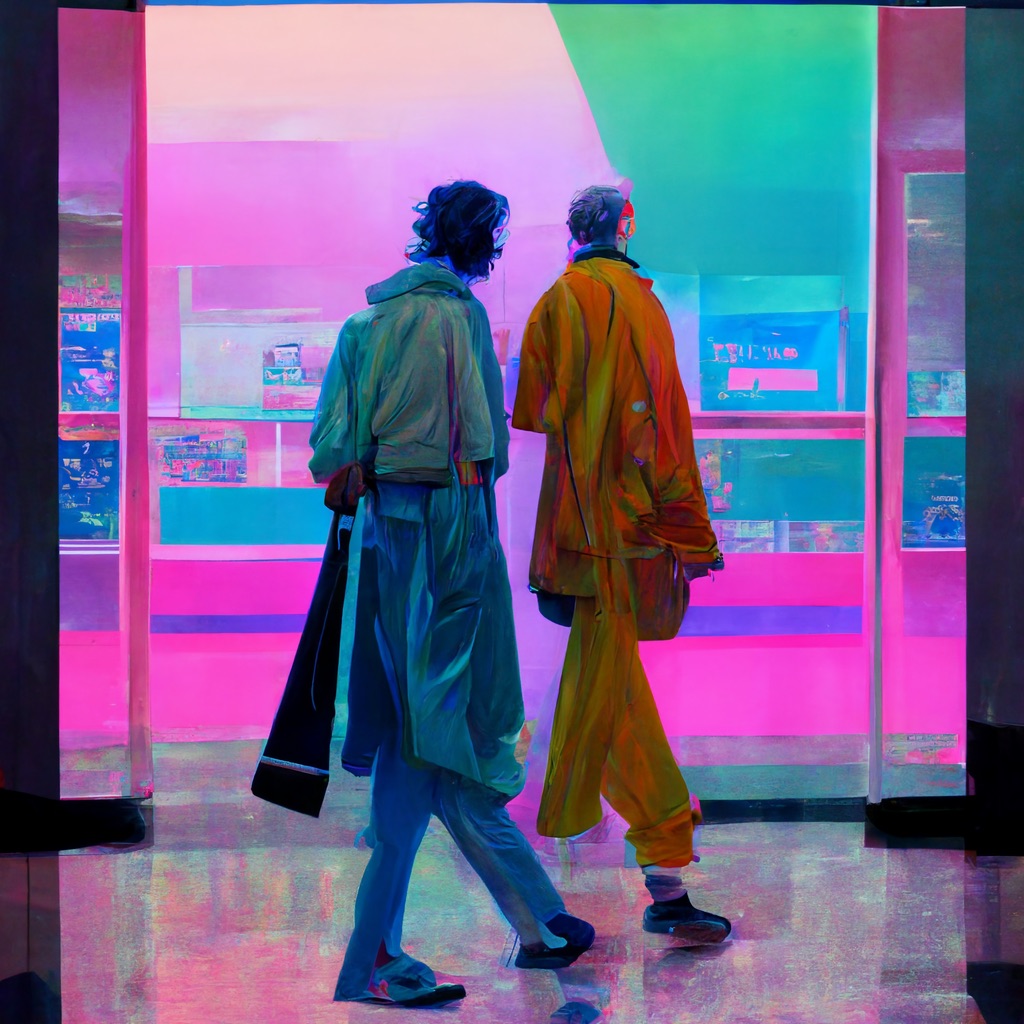
It seems we aren’t famous enough to be faithfully represented. The fact that I’m reluctant to post photos of myself doesn’t help. After all, I’m no Denise Richards.
The rest are bigger because I “max upsized” them.
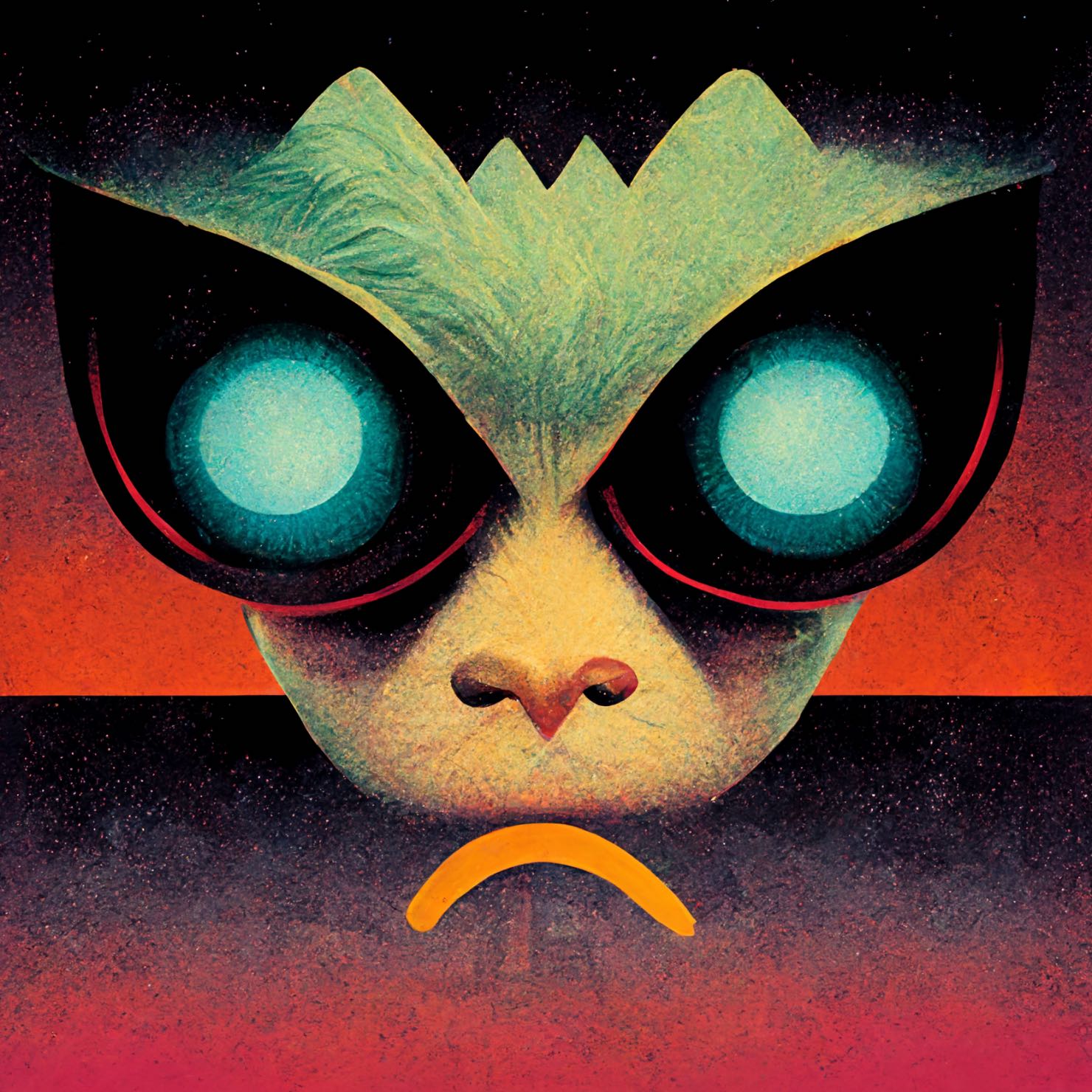
I thought I’d tie into the 80s with a “Gremlins” reference, but the result is slightly unnerving.
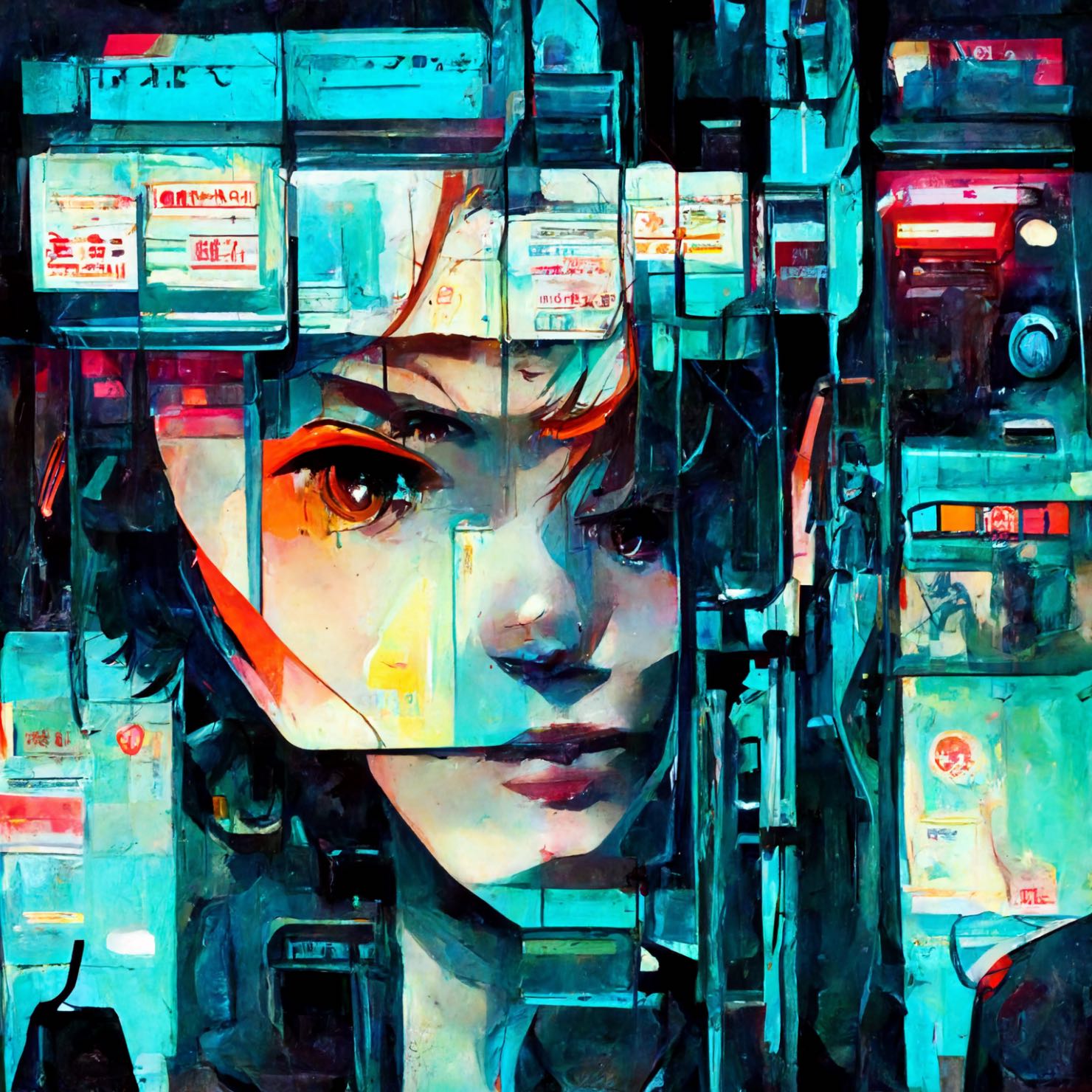
Minute Taker and I are in the market for cover art for our upcoming collab “Just an Echo,” hence the mirror reflections.
Right now “max upsize” only spits out a 1664×1664 image, considerably shy of the 3000×3000 minimum required by distributors.
That didn’t stop me from pulling this image into a 3000×3000 Canva document and adding text.
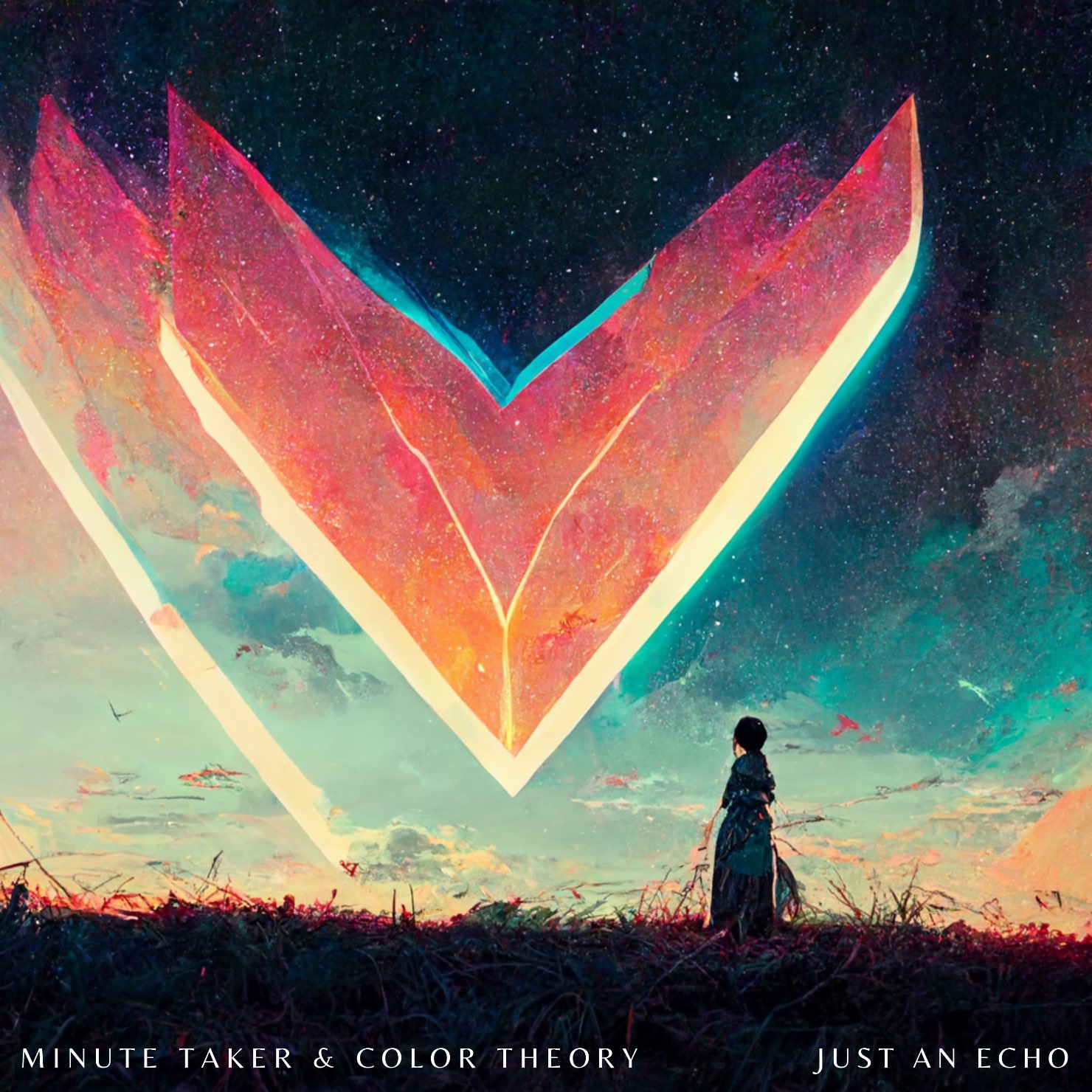
I doubt we’ll use it, but I kinda sorta love it. I would never have conceived of it, and yet it matches the song emotionally. To me at least!
After that, I ran out of free credits and had to pony up $10 for a monthly subscription so that I could create the featured image for this post.
I almost went with this:
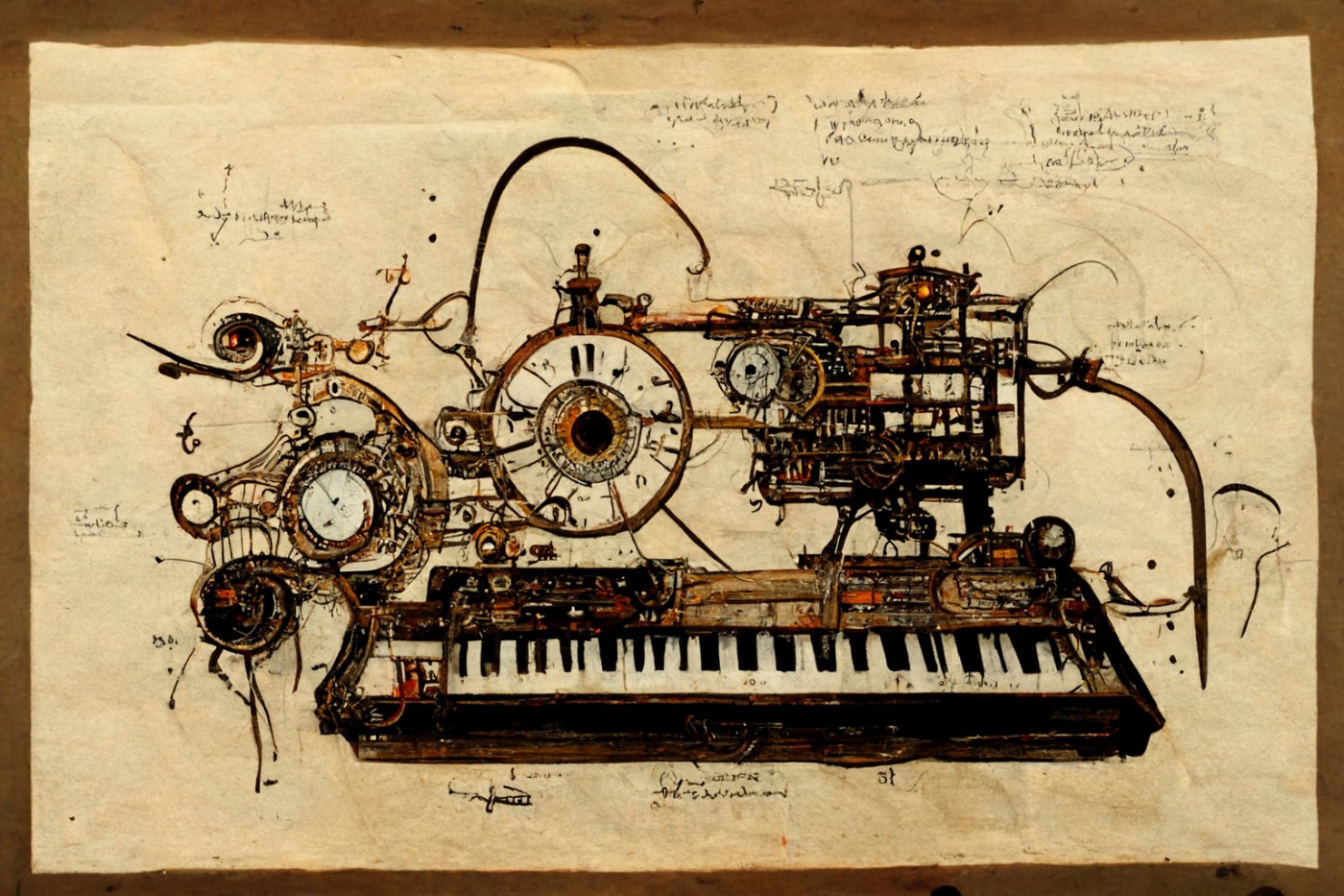
The “–ar 3:2” at the end of the prompt specifies the aspect ratio. It doesn’t have to be square.
As cool as the clockwork synthesizer is, I decided to hit the nail on the head with “robot painter painting on a canvas resting on an easel hyper-realistic steampunk –ar 3:2” which you’ll find at the top of this post.
I’m tempted to go the AI route, for my singles at least. My fear is that we’ll all become experts at spotting AI-generated images in the next few months.
One thing’s for sure: I wouldn’t want to be a graphic designer right around now.
Since LANDR came out, the number of mastering jobs I get in a year has declined precipitously. AI mastering is, in my biased opinion, nowhere near as good as AI graphic design, yet it appears to be catching on.
The sweet spot at the moment, especially if realistic human faces are desired, is a combination of AI tempered by a human professional.
Want to try Midjourney for yourself? Join the beta here.
Would you use AI-generated cover art? Why or why not? Let’s get to the bottom of it in the comments!


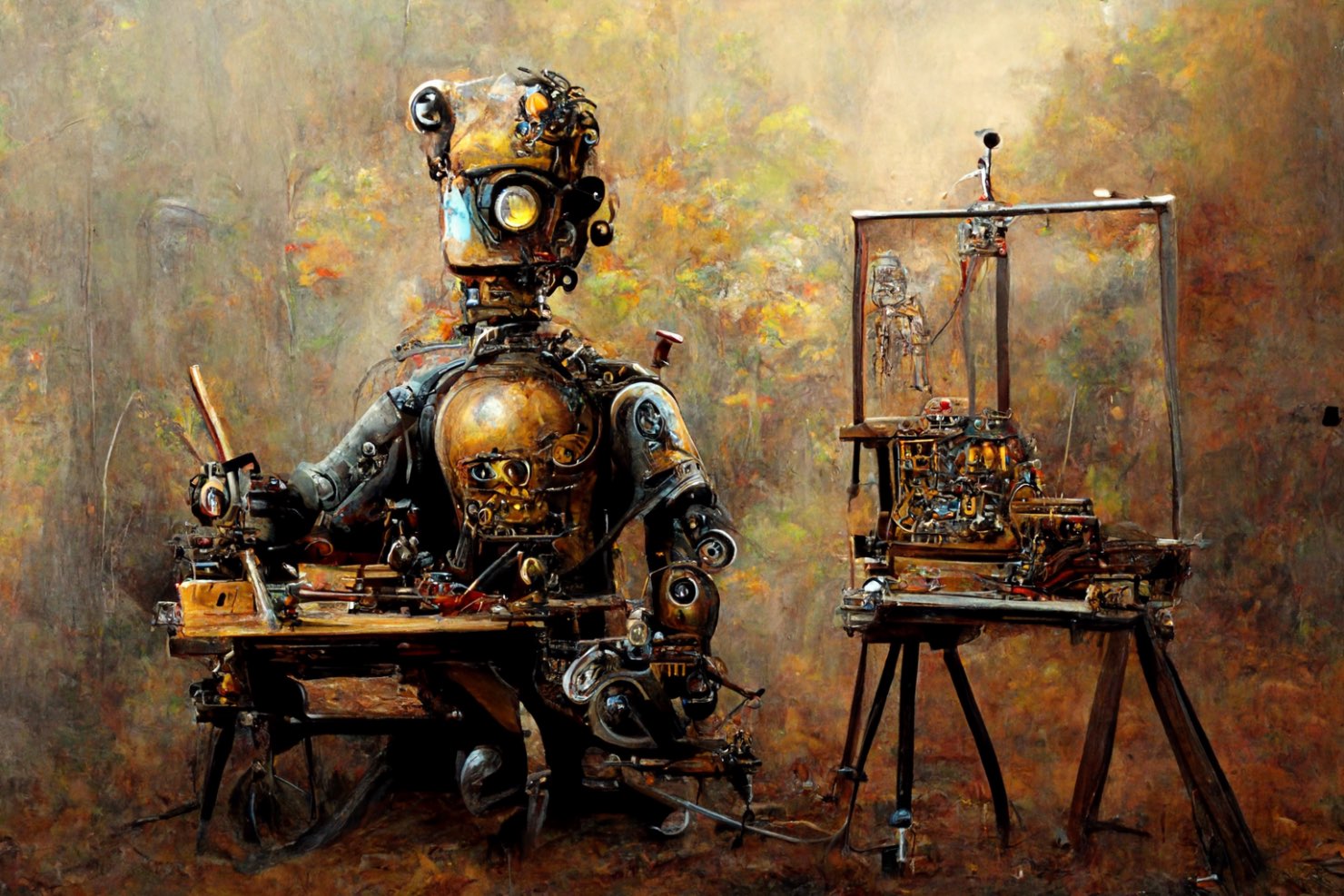
Hi Again Brian! 🙂
Your timing is impeccable as I’m just about to have a play with this myself. I could definitely have done with this when brain storming ideas for my most recent cover art. In the end I commissioned an artist friend to realise my vision which is obviously the old school purists approach which was madly creative and I loved being part of it. However when trying to manifest the germ of an idea this tool would be incredibly useful and very affordable… for the moment at least.
The next feature is perhaps where the morality line blurs as you can feed Midway any copyrighted image that you like and it will create something very similar but crucially not the same. When faced with an inordinately expensive commercial license for a copyrighted image I can see how this feature will be very appealing to many. The obvious downside to this is for the jobbing freelance artist who will no longer get the commissions or simply get their artwork ripped in a 3-minute render.
Thanks
Neil (Indelible Scars)
You bring up a good point Neil!
It’s worth signing up just to come up with ideas to pass on to a designer.
Copyright is going to run into some serious challenges, as you alluded to.
I didn’t try feeding Midjourney a copyrighted image, but I did try feeding it an image I pieced together with photos of Ben and myself. I was hoping it would insert us into the scene, but it didn’t really work.
Hey Brian,
Ive really enjoyed the mid journey beta. I thoroughly recommend checking out Dan Catt’s youtube channel for midjourney and generative art content: https://www.youtube.com/c/DanCatt
Most interestingly, he teams midjourney with gigapixel to scale the images to a usable size (there’s a video or two on that). this might be of use to you!
Thanks for the recommendation Tim!
I just subscribed to Dan’s channel.
I’m surprised Midjourney doesn’t let you pay extra for larger images, as I understand it’s mostly a bandwidth limitation.
Great post – for me: singles yes (essentially everything is a tiny Spotify box anyhow), albums no – CD/LP pressings need the respect of a real artist.
I can get on board with that! I generally pull my singles once the album is released anyway.
Interesting! Don’t you lose the song stats (play count etc.) by doing that?
Nope! Just gotta use the same ISRC and ideally the same recording, though I tend to make minor mix improvements.
That said, you always want to wait to pull the old one until Spotify matches the new one. You’ll know when the stream count is the same.
Oh wow! That’s amazing! Thanks so much for the tip (and all the work you do here generally!)
Agree with you on this Gee
Wow!
This tool is amazing. Thanks for the tip off about it. Cheap and unique graphic design for nothing, it’s a dream come true.
I’ve found that putting the pics into an image resizer works pretty well. Maybe there’s a loss of quality, my eyes aren’t sharp enough to notice much, and as an indie artist, I’m not sure if the public at large does either.
AI mastering is pretty good, but as I’ve progressed with music production, I’ve noticed that my mixing/mastering has started to ‘beat’ the AI. So, if nothing else, it’s a good learning tool for us newer musicians.
A friend/client used Topaz to upsize his artwork and it looks great! Still, I’m already growing weary of the Midjourney look, with the exception of the photorealistic stuff that I can never quite conjure up myself.
Glad you found a use for AI mastering! 🙂
I feel a little blurry on the copyright. I was reading through DALL.E’s policy about use and it sort of looks like if I don’t print images (merch, etc.) of the cover art I might be able to sneak by with using their art as cover art?
I strangely ran into a similar issue with two artists I recently worked with for cover art, one I hired as a commission and another a licensee to use their image for album art. They were ok with me using the art I’d paid for as the digital image for my album, but were not ok with me making prints/selling T-shirts/stickers of the image. Which tells me I need to get a contract ready before hiring my next artist.
Although that sort of leads me to the feeling I had when I started creating things beyond my abilities with AI. I’ve been a graphic designer/artist for years and some of it feels like: What is the point when I can type in what I want and receive a pretty cool rendering way faster than making the art myself?
All the dilemmas and questions! I do have an email out to DALL.E’s support team about being able to use the image for cover art (since I’m theoretically making money off the streams of the track instead of people consuming the art), I’ll let you know if I have any answers.
From my very brief research into DALL.E copyright, it looks like you are free to use the images for any purpose, including commercial purposes. I know that’s the case with Midjourney and I see AI art on SubmitHub all the time now.
Sorry to hear about the rights complications with the artists you worked with. For my album The Sound, I licensed an already-existing work, and I can imagine that she wouldn’t want me making shirts out of it. Though come to think of it, I did. 🙂
It seems obvious to me that these AIs are going to develop to the point where most artists will use them instead of hiring a designer. I’m not ready to do that yet, at least with Midjourney. I want to mess around with another AI called Stable Diffusion. From what I’ve seen, I prefer the look.
Stable Diffusion is amazing! It forces you to write better prompts but it gives much greater control in output. Also no censorship and truly “open”-source. If you have a good GPU, no need to buy tokens or what not. Just generate the images locally on your PC.
You’re preaching to the choir, my friend! I’m already addicted.
I’m using DiffusionBee to run Stable Diffusion on my Mac, no GitHub required. Problem is, I’m always running it, because WHY NOT generate cool new images while I work?
It’s too easy to get sidetracked.
Hi Brian,
Thanks for your very informative site. I remember you mentioning (in another comment section) that you had/have music on Marmoset. Just curious, did they help you get some good placements? Would you recommend them?
If memory serves, I got one good placement (hundreds of dollars) and a couple small ones early on, then nothing for years. Last year we parted ways, and I haven’t looked into sync licensing since. I should really find a sync agent.
I still think Marmoset is excellent overall. They just don’t know what to do with my music.
Hi Brian,
Love to read this amazing art blog, I have a question that many people are wondering how should anyone start adventurous AI Art Journey
I’d say DreamStudio is probably easiest.
My apologies if this has already been touched on here but – what are some opinions about the “ethics” of using AI generated art for music promotion given some of the concerns raised in this post? Anyone concerned about “tarnishing” their brand?
That’s quite the can of worms you’re opening up there Mike!
A mixing client of mine recently hired a graphic designer who clearly used Midjourney without mentioning it. Now that the tools are built into Photoshop, it’s getting hard to escape.
Not that it excuses using artists work to train the models without compensation!
Hey Brian: Unintended controversy – not really wanting to step on any toes or anything. My Gen Z, 21 year old Step-Son raised the issue to me. Got me thinking and I wanted to hear some opinions from fellow artists. I’m sure the topic is being beaten to death on Reddit but I haven’t had a chance to have a look yet. In my case there’s an AI piece we’re considering purchasing off a licensed photography site. So THEN the question becomes; does that make it “fair use” ethically and 2) since AI generated art is a conglomeration of artistic content and styles, is it then, “stealing” someone else’s work? If so, whose work?
I’m sure you’ll find plenty of discussion on Reddit, and YouTube!
My understanding is that pure AI art, without any input from a person, can’t be copyrighted in the US. But of course there was input in the form of a prompt, and quite possibly some refinement after that.
I think it’s a safe bet that if the work you’re considering can be licensed, then using it without permission is stealing. Whether or not it would hold up in court is another question but I’m sure you’ve got better things to do!